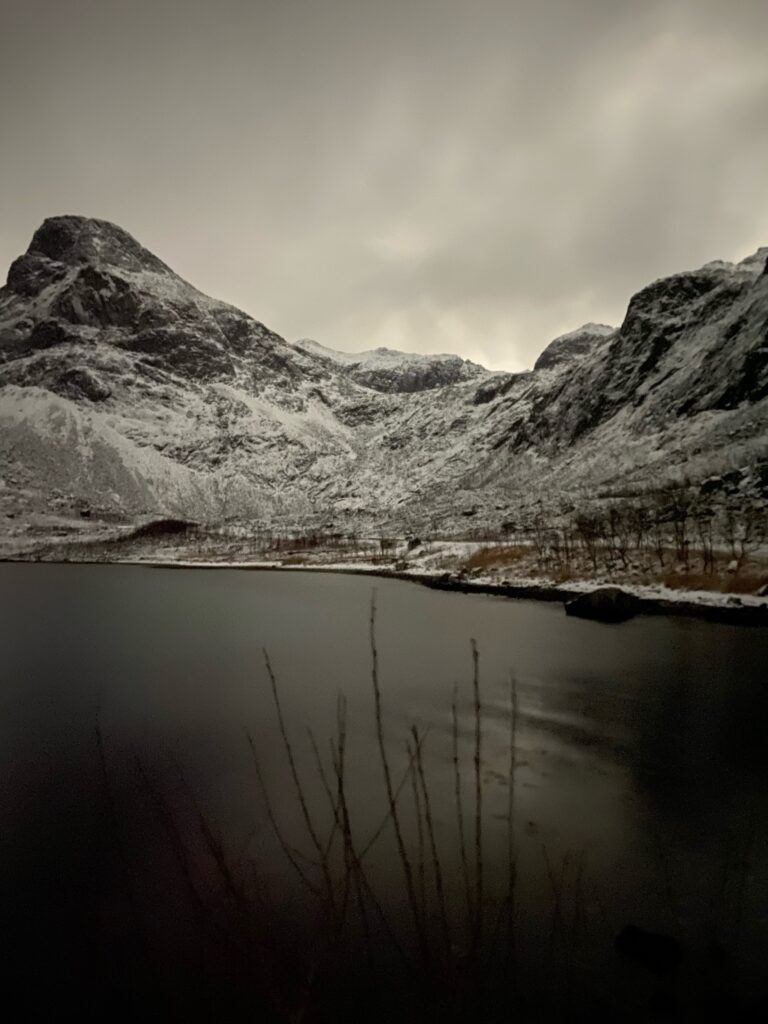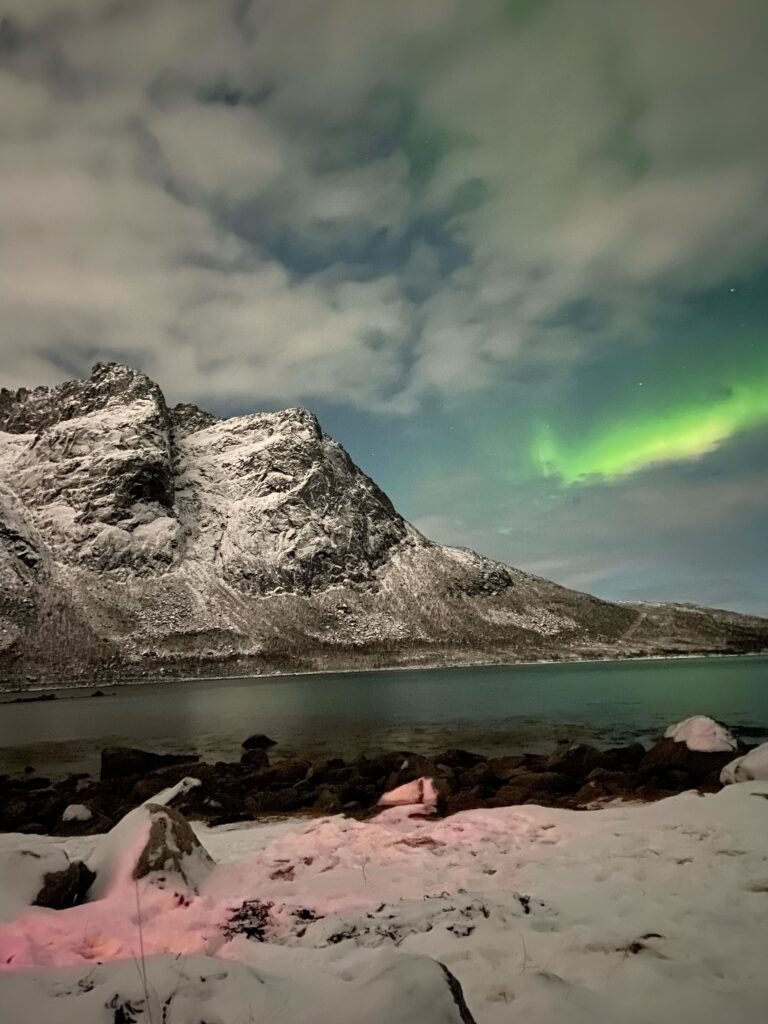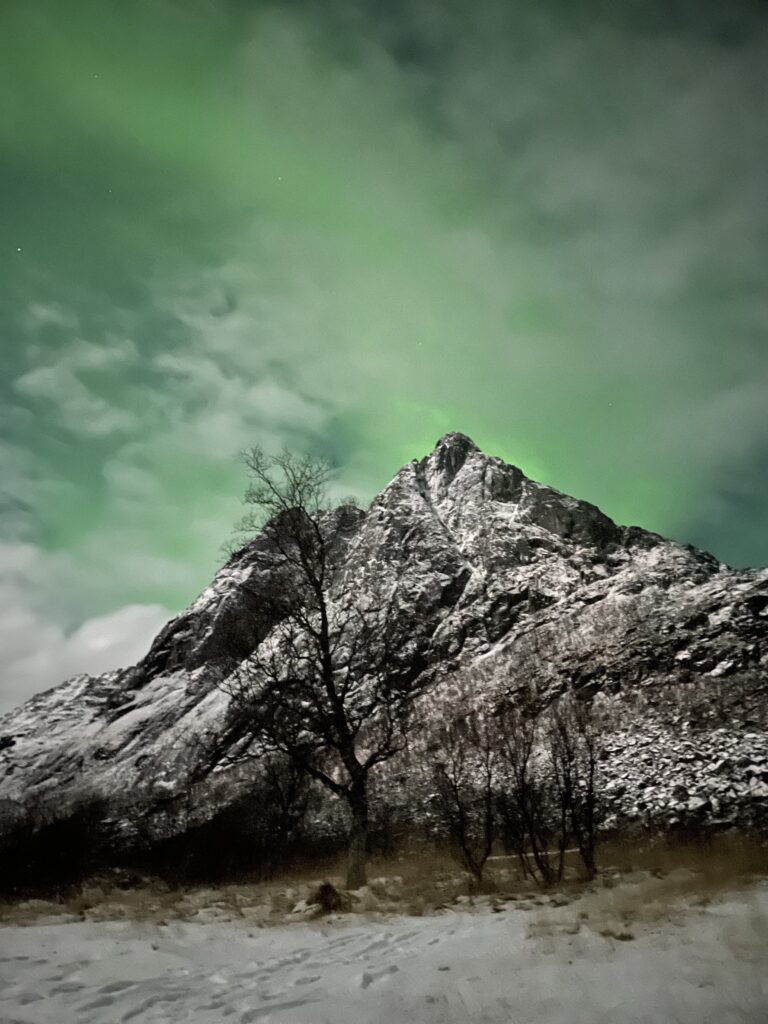Experiencing the Aurora Borealis is an unforgettable experience that everyone should have in their lifetime. It is an enchanting phenomenon that is truly out of this world! In this blog, I will detail what the Northern Lights are, the best times to observe them, how to photograph them, what to wear, and what to bring. In addition, I will also go over our own personal experience visiting Tromsø, Norway to observe the Aurora Borealis.
Introduction to the Aurora
The Aurora Borealis or Northern Lights are a natural phenomenon that occurs in the night sky. It is a spectacular display of colorful lights that can be seen in high-latitude regions such as Alaska, Canada, Scandinavia, Iceland, and the Arctic Circle. The Aurora is a result of charged particles from the sun interacting with the Earth’s atmosphere.
The Aurora Borealis is one of the most beautiful and awe-inspiring sights on Earth. It has been a source of fascination for people for centuries and is a mesmerizing experience to behold. For anyone planning a trip to the Arctic Circle or high-latitude regions, this guide will help you make the most of your journey and enhance your northern lights viewing experience.
What are the Northern Lights?
The Northern Lights are an incredible natural phenomenon that occurs when the sun’s particles interact with the Earth’s atmosphere. This interaction causes the particles to become energized, resulting in the spectacular display of colorful lights in the night sky. It is a unique light show that is truly a magical experience.
The Northern Lights are also known as the Aurora Borealis, which is Latin for “North Wind of the Dawn”.
The Northern Lights can be seen in different colors depending on the type of particles that are interacting with the Earth’s atmosphere. The most common colors are green, pink, purple, blue, and yellow.
Where to See the Northern Lights
The Northern Lights are most commonly seen in high-latitude regions such as Alaska, Canada, Scandinavia, Iceland, and the Arctic Circle. They are visible from late autumn to early spring, when the nights are longest and the sky is clear.
In Alaska, the best places to view the Aurora Borealis are Fairbanks, Denali National Park, and the Kenai Peninsula. In Canada, the best places to view the Northern Lights are Yellowknife and Whitehorse in the Yukon Territory. In Scandinavia, the best places to view the Northern Lights are Norway, Sweden, and Finland. In Iceland, the best places to view the Aurora Borealis are Reykjavik and Akureyri. In the Arctic Circle, the best places to view the Northern Lights are Murmansk in Russia and Tromsø in Norway.
The Best Times to See the Northern Lights
The best time to view the Northern Lights is during the late autumn and early spring months when the nights are longest and the sky is clear. The Northern Lights are not visible during the day, so it’s important to plan your trip during the right season in order to have the best chances of seeing them. To enhance your northern lights viewing experience, try to plan your visit during times when the moon is not visible.
The Northern Lights are most active during the peak of the solar cycle. During this time, the Aurora Borealis is more frequent and more intense, making it easier to spot them in the night sky.
How to Photograph the Northern Lights
Photographing the Northern Lights can be a challenge, but it’s also a rewarding experience. In order to get the best photos, it is important to use the right camera settings. The most important setting to consider is the shutter speed. To capture the Aurora Borealis in its full brilliance, you should use a shutter speed of at least 5 seconds.
It is also important to use a low ISO setting, as this will help reduce noise in the photo. A wide-angle lens is also recommended, as this will help you capture the entire Aurora Borealis in the frame.
Finally, it is important to use a tripod to keep the camera steady while taking the photo. This will help prevent blurriness and ensure that the photo is clear and crisp.
What to Wear and What to Bring
It is important to be prepared for your Northern Lights viewing experience. The most important thing to wear is warm clothing. It can get very cold in the high-latitude regions, so it’s important to dress in layers. Also, be sure to wear a hat and gloves to stay warm. Lastly, be sure to wear appropriate boots for the snow and cold, so that you can stay out all night experiencing the Aurora Borealis.
In addition to clothing, it’s also important to bring the right equipment. Binoculars are useful for viewing the Aurora Borealis from a distance. A tripod is also important for taking photos of the Northern Lights. A flashlight and a camping chair can also be helpful, as they will make it easier to stay in one spot and enjoy the show.
Conclusion
The Aurora Borealis is a magnificent natural phenomenon that everyone should experience. This guide will help you make the most of your trip and have the best chances of seeing the Northern Lights. From understanding what the Northern Lights are to knowing where to find them and when to look for them, this guide should provide you with all the information you need to make the most of your Aurora Borealis experience. So what are you waiting for? Get ready to experience the magic of the Aurora!
Personal Experience
In December of 2022 Mason and I visited Tromsø, Norway with the hopes of seeing the Aurora Borealis. We left this trip truly mesmerized from what we saw and can confidently say that everything on this trip truly surpassed any expectations we had going into the trip. We were lucky enough to see the lights on two separate nights while visiting Tromsø, both nights providing a unique perspective.
Our first night seeing the lights we were at a Overnight Aurora and Dog Sledding Camp in Tromsø. We booked through Tromsø Wilderness Center and could not have been happier. We did an overnight stay in a Lavuu and then woke up the next morning to dog sledding with huskies. During our stay we had full access to the dogs throughout the night, as well as a fire pit with chairs lined with reindeer skins. The guides pointed out the lights and showed us what to look out for so we were able to spot them on our own. They also told us ancient stories of the lights and explained to us how the lights are able to form and what causes the different colors in the Aurora.
Our second night seeing the northern lights we booked a small bus chase with Mariannes Heaven On Earth Aurora Chaser Tours. Marianne truly was magical and we do not have enough good things to say about our experience with her company. Marianne is a local of the Tromsø region and knows all of the best spots to see the lights. She also owns her own property in the area, ensuring that you have a private viewing spot of the Aurora. Marianne is a trained photographer and was able to help us with the correct camera settings to capture the lights with. She equipped us with tripods for both our phones and cameras, suits and boots to withstand the weather, as well as snacks and drinks to get us through the long night. Our night with Marianne truly felt light a National Geographic lights chase and if we ever find ourselves back in Tromsø we will be sure to go on another chase with Marianne!




